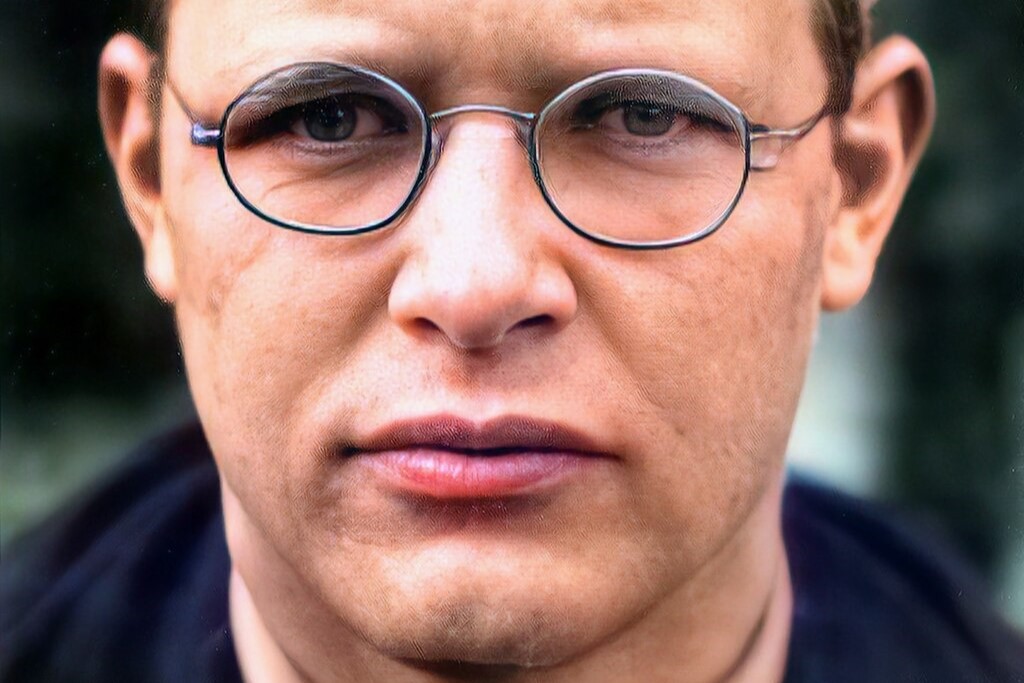Historical analogies are a dangerous, and often inaccurate, way of interpreting the times in which we live. “This is just like that” has a habit of making us react and respond to “that” - which we think we understand so well - when really, we should be taking time to appreciate the nuances of the problems which “this” uniquely poses us now.
That said, I don’t suppose ever, in the last 80 years, have analogies abounded in our media with such ubiquity that we find ourselves in a historical moment facing similar threats to our freedoms and way of life to those arising across Europe in the 1930s.
Thus, the movie Bonhoeffer, Todd Komarnicki’s fantastic new biopic of the dissident German theologian and Christian martyr, appears to come at an opportune moment in our culture.
As writer and director of this two-hour-long epic, Komarnicki’s admiration for his subject shines through like a faithful sun breaking through an overcast sky. And whether you are a Christian or not, there is undoubtedly much to admire in Dietrich Bonhoeffer’s life and the way he lived it.
It's a story worth hearing - which, given its Christian overtones, still has the power to break out of the boundaries of Christian sub-culture to a wider audience, with its message of courage in the face of overbearing evil.
Born in 1906, Bonhoeffer was still a young man when Hitler and his newly formed Nazi party rose to power. He trained as a Lutheran pastor, was an accomplished theologian, and became a key founding member of the Confessing Church – the remnant of the German church who did their best to withstand Hitler’s ideological take-over. (For which, many paid with their lives.) By the early 1930s, Bonhoeffer had already perceived the dangers which few others in the German church seemed able to see or else willing to call out. And after abandoning a short stint of study in the US, he returned to his native Germany to do what he could to call the church back to herself before it was too late. No easy task.
x

One existing photograph of Bonhoeffer shows a young, earnest face in steel-rimmed glasses, an expression of wisdom beyond his years weighing heavy on his brow. But for all the seriousness of his situation, he was, by Komarnicki’s account, an ebullient character. Persuasive, playful and able to find joy even in the darkest of times.
In Bonhoeffer, he is played brilliantly by Jonas Dassler, a native German actor who brings an intensity and intelligence to the role which must be a fair reflection of the man himself, as well as allowing room for a levity of spirit, especially in his friendships and family ties.
There’s a scene early in the film, foreshadowing much that was to come. Dietrich the boy plays the Moonlight Sonata at his older brother Walter’s funeral wake. The piece was Walter’s favourite, but none of the mourners pay the slightest attention. Dietrich slams the piano shut and runs off in frustration. “No one listened,” he tearfully complains to his mother. “No one cared.” This theme of rousing a deaf or unfeeling world to moral action runs through the whole movie.
We can all agree that Bonhoeffer is a man to emulate in our own times. The question is where would his instincts lie in the political and cultural landscape of today.
Komarnicki has done a solid job unfolding Germany’s inexorable descent into darkness, often marking key moments as Bonhoeffer the man makes his stand against the state with actual quotations from his work. The most famous serves as the movie’s strapline:
“Silence in the face of evil is itself evil. Not to speak is to speak.”
The script is peppered with such exhortations, which seems directed as much to the audience of today as they do to Bonhoeffer’s own, eighty-or-ninety-odd years ago. Such injunctions seem all the more arresting as Bonhoeffer’s story pursues its arc from pastor to martyr, and the noose awaiting him at Buchenwald concentration camp just days before Germany’s final capitulation.
It is no doubt hard to frame a movie around the moral courage and conscientious stand of a single man, however admirable that man may be, particularly when so much of the struggle is happening inside his own head. Perhaps that is why much of the less historically accurate material has been included. The thriller subplot – of Bonhoeffer’s involvement in a plot to assassinate Hitler – brings some necessary forward propulsion to the story, but seems the least congruent with what we know of the man. Much of this more thrusting narrative is intercut with scenes of Bonhoeffer’s last days before his execution, the wrestling with his faith and his fate, before a final resolution of peace, even joy in his final moments. “Eternity, eternity, eternity,” he murmurs. A word he used to repeat endlessly with his twin sister as they whiled away the time smoking cigarettes. But a word which ultimately gives him the focus and the spiritual strength to hold his courage to the end. Although slower, these provide a more convincing and compelling portrait of a man who deserves to be remembered as a hero, not only of his own age, but of any age where evil is determined to silence truth at any cost.
As a modern audience, this is where the hazard lies. To return to my original point, it is all too easy to tar one’s political or cultural opponents with the label of “fascist” or “Nazi” – merely because they happen to disagree with you. (And sadly I’ve seen this done by otherwise mild-mannered English theologians over this very film.) Some have said this is akin to shunning another child in the playground because they have “cooties”. It’s over-simplistic and facile. If anything, it reveals the casual propagandising of a suggestible mind.
Few would watch this film and associate themselves with its antagonist (Hitler) over its heroic protagonist. We can all agree that Bonhoeffer is a man to emulate in our own times. The question is where would his instincts lie in the political and cultural landscape of today.
Jesus had harsh words to say to the pharisees and scribes who build tombs for the prophets and decorate the monuments of the righteous. “You say, ‘If we had lived in the days of our fathers, we would not have been partners with them in shedding the blood of the prophets.’”
How easy it is to assume we would have been on Bonhoeffer’s team.
And this is my one criticism of the film: its portrayal of the bishops and clergy who did succumb to Hitler’s ideology seems too blunt-edged. They rail from the pulpit in the manner of the Fuhrer himself, marking them as ravening ideologues; they bark out Party platitudes, red in the face. I imagine the reality of how Nazi ideology infiltrated and captured the church – as it did many other institutions – was far more subtle, far more insinuating and insidious. More boiled frog than scalded cat.
So it surely is in our day. While National Socialism has passed away, the totalitarian instinct which animated it has sadly not. My prayer is that we have the wisdom, courage, and above all discernment, to learn Bonhoeffer’s lesson and pass the tests of our time.
Komarnicki’s excellent movie may just help us to do that.
Bonhoeffer is out in UK and Irish cinemas from 7th March 2025. For more information and to book tickets visit the film's site.
Join with us - Behind the Seen
Seen & Unseen is free for everyone and is made possible through the generosity of our amazing community of supporters.
If you’re enjoying Seen & Unseen, would you consider making a gift towards our work?
Alongside other benefits (book discounts etc.), you’ll receive an extra fortnightly email from me sharing what I’m reading and my reflections on the ideas that are shaping our times.
Graham Tomlin
Editor-in-Chief





